Cover
English for Writing Research Papers
ISBN 9781441979216
Preface
Contents
Part I: Writing Skills
Chapter 1: Planning and Preparation
1.1 Think about why you want to publish your research
1.2 Give yourself enough time to plan and write your manuscript
1.3 Choose an appropriate journal, preferably with a high impact factor
1.4 Download the instructions for authors from your chosen journal AND from a high impact journal in the same field
1.5 Read and analyze papers for your literature review, and note how they are structured
1.6 Identify what the editor is looking for
1.7 Choose one paper as a model and note down useful phrases
1.8 Think about the order in which to write the various sections
1.9 Create separate files for each section
1.10 Chat with non experts
1.11 Give mini presentations to colleagues
1.12 Decide what your key findings are and whether you really have a contribution to make
1.13 For each section, think about how you can highlight your key findings
1.14 Always have the referees in mind
1.15 Referees and English level
1.16 How to keep the referees happy
1.17 Write directly in English and find ways to improve your writing skills
1.18 Consult online resources
1.19 Summary
Chapter 2: Word Order
2.1 Basic word order in English
2.2 Compare word order in your language with word order in English
2.3 Choose the most relevant subject and put it at the beginning of the sentence
2.4 Choose the subject that leads to the most concise sentence
2.5 Don’t make the impersonal it the subject of the sentence
2.6 Don’t use a pronoun (it, they) before you introduce the noun (i.e. the subject of the sentence) that the pronoun ref
2.7 Put the subject before the verb
2.8 Keep the subject and verb as close as possible to each other
2.9 Avoid inserting parenthetical information between the subject and the verb
2.10 Don’t separate the verb from its direct object
2.11 Put the direct object before the indirect object
2.12 How to choose where to locate an adverb
2.13 Put adjectives before the noun they describe, or use a relative clause
2.14 Do not insert an adjective between two nouns or before the wrong noun
2.15 Avoid creating strings of nouns that describe other nouns
2.16 Ensure there is no ambiguity in the order of the words
2.17 Summary
Chapter 3: Breaking Up Long Sentences
3.1 Think above all about the reader
3.2 The longer your sentence, the greater the chance it will be misunderstood
3.3 Short sentences are not a sign of inelegance and superficiality
3.4 Why and how long sentences are created
3.5 and
3.6 as well as
3.7 Other link words that introduce additional information: moreover, in addition, furthermore
3.8 Link words that compare and contrast: whereas, on the other hand; although, however
3.9 Link words that give explanations: because, since, as, in fact
3.10 Link words that express consequences: owing to, due to, as a result of, consequently, thus etc.
3.11 which and relative clauses
3.12 - ing form
3.13 in order to
3.14 Excessive numbers of commas
3.15 Semicolons
3.16 Semicolons in lists
3.17 Phrases in parentheses
3.18 Summary
Chapter 4: Structuring Paragraphs and Sentences
4.1 The key to good writing: always think about the reader
4.2 General structure of a paragraph
4.3 How to structure a paragraph: an example
4.4 First paragraph of a new section - begin with a mini summary plus an indication of the structure
4.5 First paragraph of a new section - go directly to the point
4.6 Deciding where to put new and old information within a paragraph
4.7 Deciding where to put new and old information within a sentence
4.8 Link each sentence by moving from general concepts to increasingly more specific concepts
4.9 Present and explain ideas in the same (logical) sequence
4.10 Don’t force the reader to have to change their perspective
4.11 Use a consistent numbering system to list phases, states, parts etc.
4.12 Begin a new paragraph when you talk about your study and your key findings
4.13 Break up long paragraphs
4.14 Look for the markers that indicate where you could begin a new sentence
4.15 Concluding a paragraph: avoid redundancy
4.16 Summary
Chapter 5: Being Concise and Removing Redundancy
5.1 Cut, cut and then cut again
5.2 Write less, make less mistakes
5.3 Cut redundant words
5.4 Prefer verbs to nouns
5.5 Use one verb (e.g. analyze) instead of a verb + noun (e.g. make an analysis)
5.6 Reduce the number of link words
5.7 Choose the shortest words
5.8 Choose the shortest expressions
5.9 Use the shortest adverbial expression
5.10 Avoid pointless introductory phrases
5.11 Avoid impersonal expressions
5.12 Reduce your authorial voice
5.13 Be concise when referring to figures and tables
5.14 Use the infinitive when expressing an aim
5.15 Redundancy versus Conciseness: an example
5.16 Constantly ask yourself - does what I am writing add value for the reader?
5.17 Summary
Chapter 6: Avoiding Ambiguity and Vagueness
6.1 which / who vs. that
6.2 which, that and who
6.3 -ing form vs. that
6.4 - ing form vs. subject + verb
6.5 - ing form with by and thus
6.6 a, one and the
6.7 Uncountable nouns
6.8 Pronouns
6.9 Referring backwards: the former, the latter
6.10 above and below
6.11 Use of respectively to disambiguate
6.12 and
6.13 both … and, either … or
6.14 False friends
6.15 Latin words - i.e. versus e.g.
6.16 Monologophobia - the constant search for synonyms
6.17 Be as precise as possible
6.18 Choose the least generic word
6.19 Summary
Chapter 7: Clarifying Who Did What
7.1 Check your journal’s style - first person or passive
7.2 How to form the passive and when to use it
7.3 Ensure you use the right tenses to differentiate your work from others, particularly when your journal prohibits the us
7.4 For journals that allow personal forms, use we to distinguish yourself from other authors
7.5 Do not use we to explain your thought process
7.6 When we is acceptable, even when you are not distinguishing yourself from other authors
7.7 Make good use of references
7.8 Ensure that readers understand what you mean when you write the authors
7.9 Use short paragraphs
7.10 Make logical connections between other authors’ findings and yours
7.11 Summary
Chapter 8: Highlighting Your Findings
8.1 Ensure that referees can find and understand the importance of your contribution
8.2 Help your findings to stand out visually on the page by beginning a new paragraph
8.3 Make your sentences shorter than normal
8.4 Present your key findings in a very short sentence and list the implications
8.5 Consider using bullets and headings
8.6 Use tables and figures to attract attention
8.7 Signal to the reader that you are about to say something important by using more dynamic language
8.8 Only use specific terms when describing your key findings
8.9 Avoid flat phrases when discussing key findings
8.10 Be explicit about your findings, so that even a non-expert can understand them
8.11 Convincing readers to believe your interpretation of your data
8.12 Show your paper to a non-expert and get him / her to underline your key findings
8.13 Beware of overstating your project’s achievements and significance
8.14 Summary
Chapter 9: Hedging and Criticising
9.1 Why and when to hedge
9.2 Highlighting and hedging
9.3 Toning down verbs
9.4 Toning down adjectives and adverbs
9.5 Toning down strong claims by inserting adverbs
9.6 Toning down the level of probability
9.7 Anticipating alternative interpretations of your data
9.8 Telling the reader from what standpoint you wish them to view your data
9.9 Dealing with the limitations of your research
9.10 Saving your own face: revealing and obscuring your identity as the author in humanist subjects
9.11 Saving other author’s faces: put their research in a positive light
9.12 Saving other author’s faces: say their findings are open to another interpretation
9.13 Don’t overhedge
9.14 Hedging: An extended example from a Discussion section
9.15 Summary
Chapter 10: Paraphrasing and Plagiarism
10.1 Plagiarism is not difficult to spot
10.2 You can copy generic phrases
10.3 How to quote directly from other papers
10.4 How to quote from another paper by paraphrasing
10.5 Examples of how and how not to paraphrase
10.6 Paraphrasing the work of a third author
10.7 How to check whether you have inadvertently committed plagiarism
10.8 Summary
Part II: Sections of a Paper
Chapter 11: Titles
11.1 How can I generate a title?
11.2 How can I make my title more dynamic?
11.3 Can I use my title to make a claim?
11.4 Are questions in titles a good way to attract attention?
11.5 When is a two-part title a good idea?
11.6 How should I punctuate my title?
11.7 What words should I capitalize?
11.8 What types of words should I try to include?
11.9 What other criteria should I use to decide whether to include certain words or not?
11.10 Will adjectives such as innovative and novel attract attention?
11.11 How can I make my title shorter?
11.12 Is it a good idea to make my title concise by having a string of nouns?
11.13 Should I use prepositions?
11.14 Are articles (a / an, the) necessary?
11.15 How do I know whether to use a or an?
11.16 Is using an automatic spell check enough?
11.17 Summary: How can I assess the quality of my title?
Chapter 12: Abstracts
12.1 What is an abstract? How long should it be?
12.2 When should I write the Abstract?
12.3 How should I structure my Abstract?
12.4 Formal, natural and applied sciences. How should I structure my abstract? How much background information?
12.5 Social and behavioral sciences. How should I structure my abstract? How much background information?
12.6 I am a historian. We don’t necessarily get ‘results’ or follow a specific methodology. What should I do?
12.7 I am writing a review. How should I structure my Abstract?
12.8 How should I begin my Abstract?
12.9 What style should I use: personal or impersonal?
12.10 What tenses should I use?
12.11 How do I write a structured abstract?
12.12 How do I write an abstract for a conference?
12.13 How do I write an abstract for a work in progress that will be presented at a conference?
12.14 How should I select my key words? How often should I repeat them?
12.15 Should I mention any limitations in my research?
12.16 What should I not mention in my Abstract?
12.17 How can I ensure that my Abstract has maximum impact?
12.18 What are some of the typical characteristics of poor abstracts?
12.19 Summary: How can I assess the quality of my Abstract?
Chapter 13: Introduction
13.1 How should I structure the Introduction?
13.2 How should I begin my Introduction?
13.3 How should I structure the rest of the Introduction?
13.4 I do not work in the field of a ‘hard’ science. Are there any other ways of beginning an Introduction?
13.5 What typical phrases should I avoid in my Introduction?
13.6 How does an Introduction differ from an Abstract?
13.7 What tenses should I use?
13.8 How should I outline the structure of my paper?
13.9 Summary: How can I assess the quality of my Introduction?
Chapter 14: Review of the Literature
14.1 How should I structure my Review of the Literature?
14.2 How should I begin my literature review? How can I structure it to show the progress through the years?
14.3 What is the clearest way to refer to other authors? Should I focus on the authors or their ideas?
14.4 What tenses should I use?
14.5 How can I reduce the amount I write when reporting the literature?
14.6 How can I talk about the limitations of previous work and the novelty of my work in a constructive and diplomatic way
14.7 Summary: How can I assess the quality of my Literature Review?
Chapter 15: Methods
15.1 How should I structure the Methods?
15.2 How should I begin the Methods?
15.3 What tense should I use? Should I use the active or passive?
15.4 How many actions can I refer to in a single sentence?
15.5 How can I avoid my Methods appearing like a series of lists?
15.6 Can I use bullets?
15.7 How can I reduce the word count?
15.8 How should I designate my study parameters in a way that my readers do not have to constantly refer backwards?
15.9 Should I describe everything in chronological order?
15.10 What grammatical constructions can I use to justify my aims and choices?
15.11 What grammatical construction is used with allow, enable and permit?
15.12 How can I indicate the consequences of my choices and actions?
15.13 How should I use the definite and indefinite articles in the Methods?
15.14 Should I write numbers as digits (e.g. 5, 7) or as words (e.g. five, seven)?
15.15 How can I avoid ambiguity?
15.16 What other points should I include in the Methods? How should I end the Methods?
15.17 Summary: How can I assess the quality of my Methods section?
Chapter 16: Results
16.1 How should I structure the Results?
16.2 How should I begin the Results?
16.3 How should I structure the rest of the Results? How should I end the Results?
16.4 Should I report any negative results?
16.5 What tenses should I use when reporting my Results?
16.6 What style should I use when reporting my Results?
16.7 Can I use a more personal style?
16.8 How can I show my readers the value of my data, rather than just telling them?
16.9 How should I comment on my tables and figures?
16.10 What is the difference between reporting and interpreting?
16.11 How can I make it clear that I am talking about my findings and not the findings of others?
16.12 Summary: How can I assess the quality of my Results section?
Chapter 17: Discussion
17.1 How should I structure the Discussion?
17.2 How should I begin the Discussion?
17.3 Why should I compare my work with that of others?
17.4 How should I compare my work with that of others?
17.5 How should I end the Discussion if I do have a Conclusions section?
17.6 How should I end the Discussion if I do not have a Conclusions section?
17.7 Active or passive? What kind of writing style should I use?
17.8 How can I give my interpretation of my data while taking into account other possible interpretations that I do not agre
17.9 How can I bring a little excitement to my Discussion?
17.10 How can I use seems and appears to admit that I have not investigated all possible cases?
17.11 How can I show the pitfalls of other works in the literature?
17.12 How should I discuss the limitations of my research?
17.13 What other ways are there to lessen the negative impact of the limitations of my study?
17.14 Summary: How can I assess the quality of my Discussion?
Chapter 18: Conclusions
18.1 How should I structure the Conclusions?
18.2 How should I begin my Conclusions? How can I increase the impact of my Conclusions?
18.3 How can I differentiate my Conclusions from my Abstract?
18.4 How can I differentiate my Conclusions from my Introduction and from the last paragraph of my Discussion?
18.5 I don’t have any clear Conclusions, what can I do?
18.6 How can I end my Conclusions?
18.7 What tenses should I use?
18.8 Summary: How can I assess the quality of my Conclusions?
Chapter 19: Useful Phrases
19.1 Index of Useful Phrases
19.2 How to use the Useful Phrases
Chapter 20: The Final Check
20.1 Ensure your paper is as good as it could possibly be the first time you submit it
20.2 Print out your paper. Don’t just correct it directly on your computer
20.3 Always have the referee in mind
20.4 Anticipate referees’ comments on your English
20.5 Judge your writing in English in the same way as you would judge it if you had written the paper in your native langu
20.6 Cut, cut, cut and keep cutting
20.7 Check your paper for readability
20.8 Check for clarity in the logical order of your argumentation
20.9 Do a ‘quality control’ on your paper
20.10 Be careful with cut and pastes
20.11 Double check that you have followed the journal’s style guide
20.12 Make sure that everything is completely accurate
20.13 Make sure everything is consistent
20.14 Dealing with rejections
20.15 Take editorial comments seriously
20.16 Consider using a professional editing service
20.17 Don’t forget the Acknowledgements
20.18 Write a good letter / email to accompany your manuscript
20.19 Final check: spelling. Don’t underestimate the importance of spelling mistakes
20.20 Summary
Links and References
Acknowledgements
About the Author
Contact the Author
Index
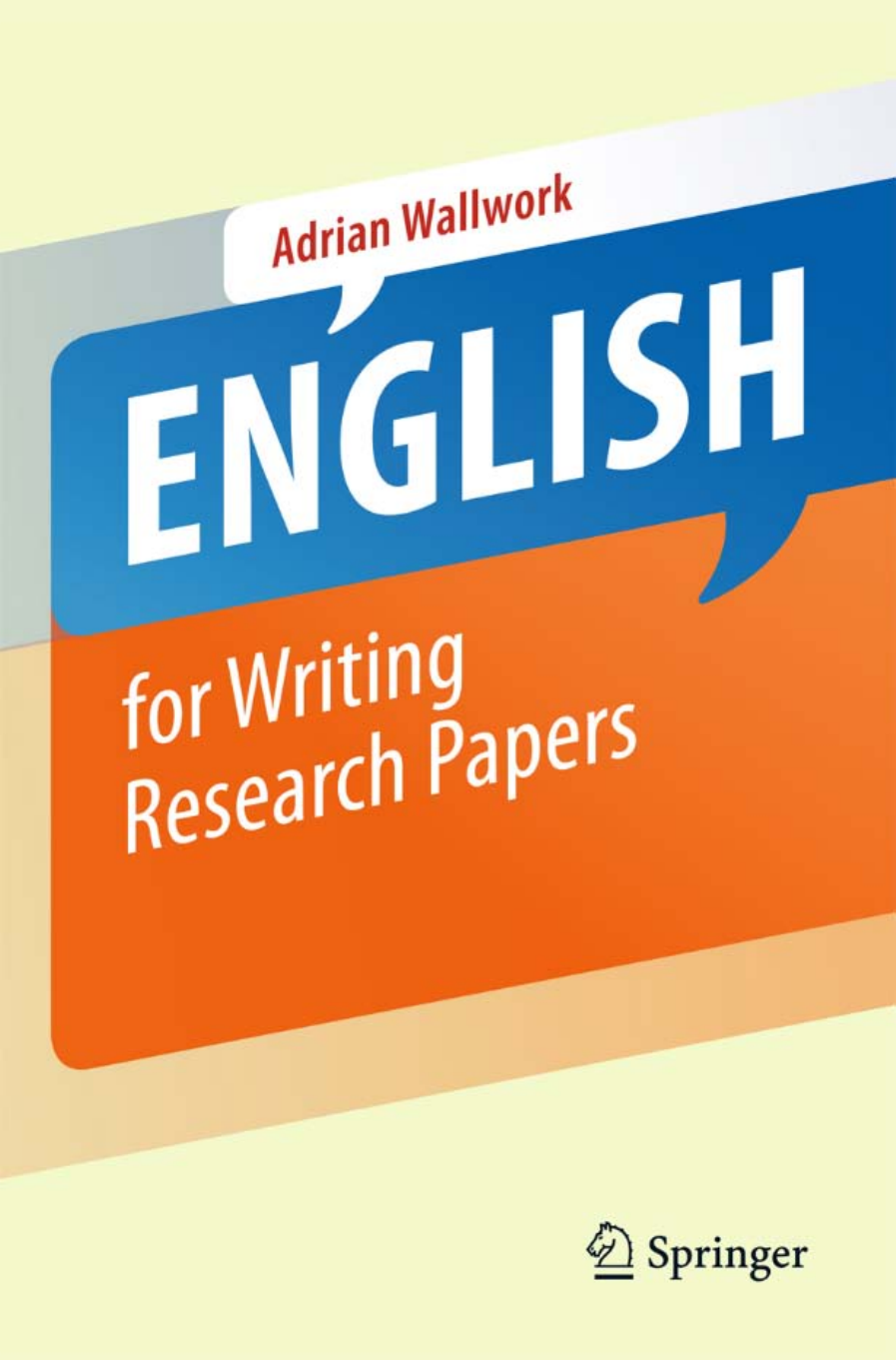
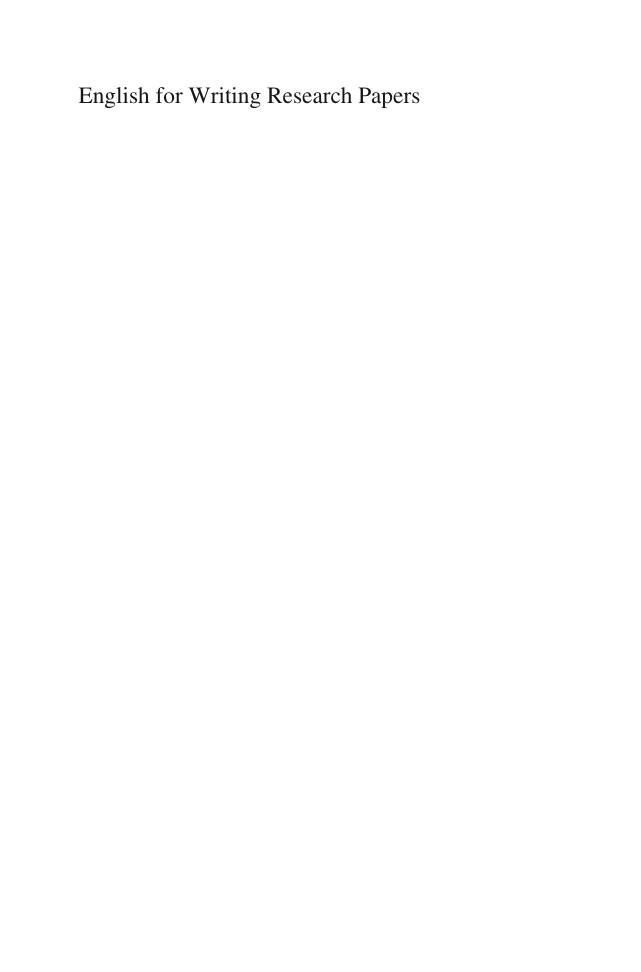

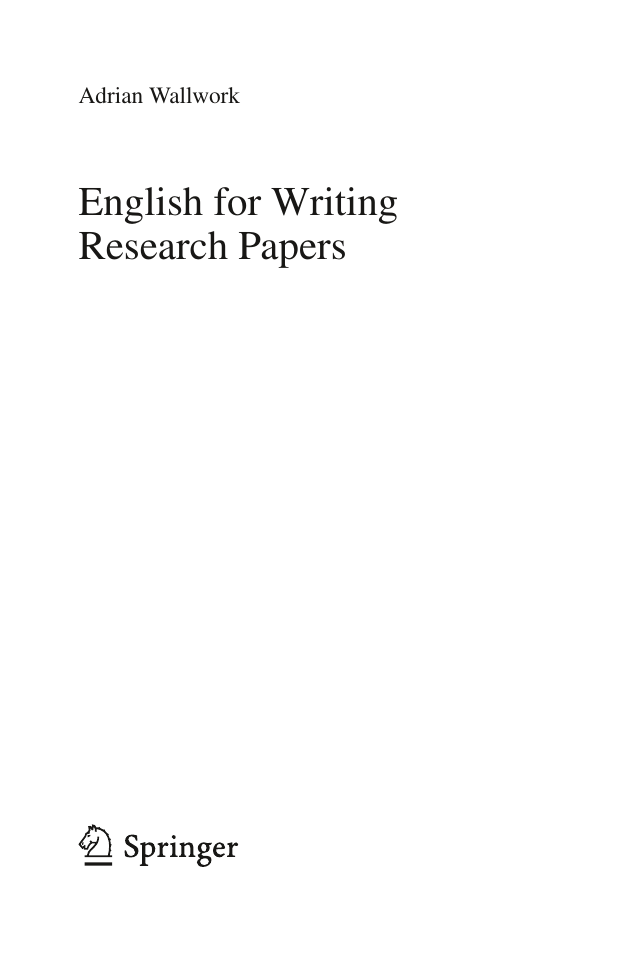
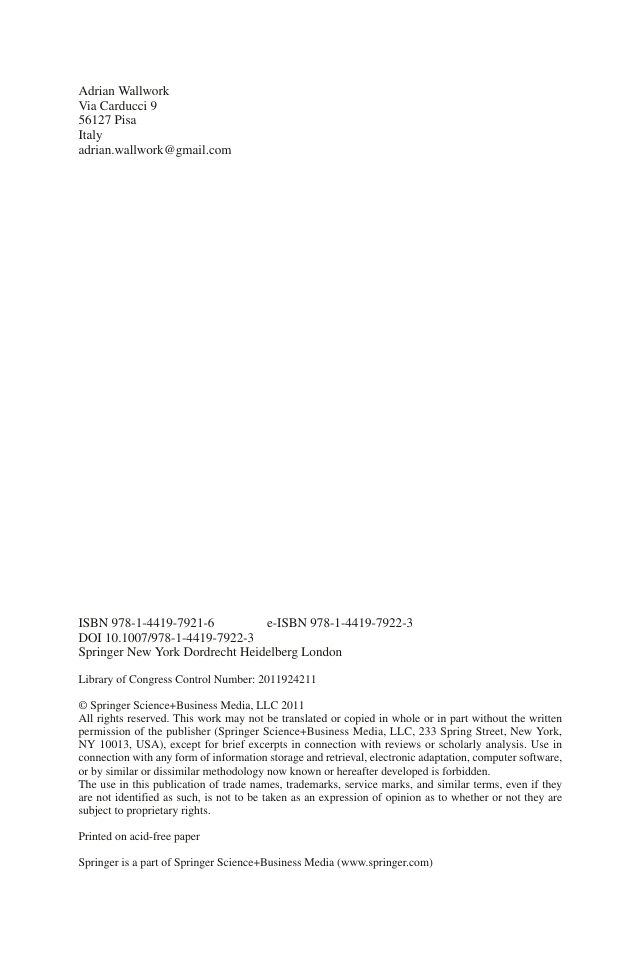
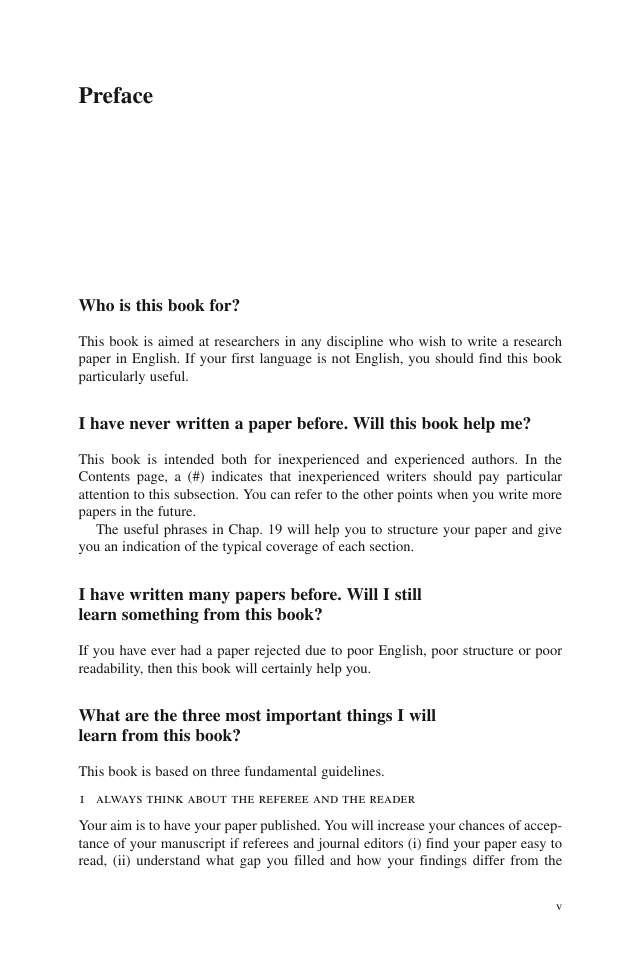
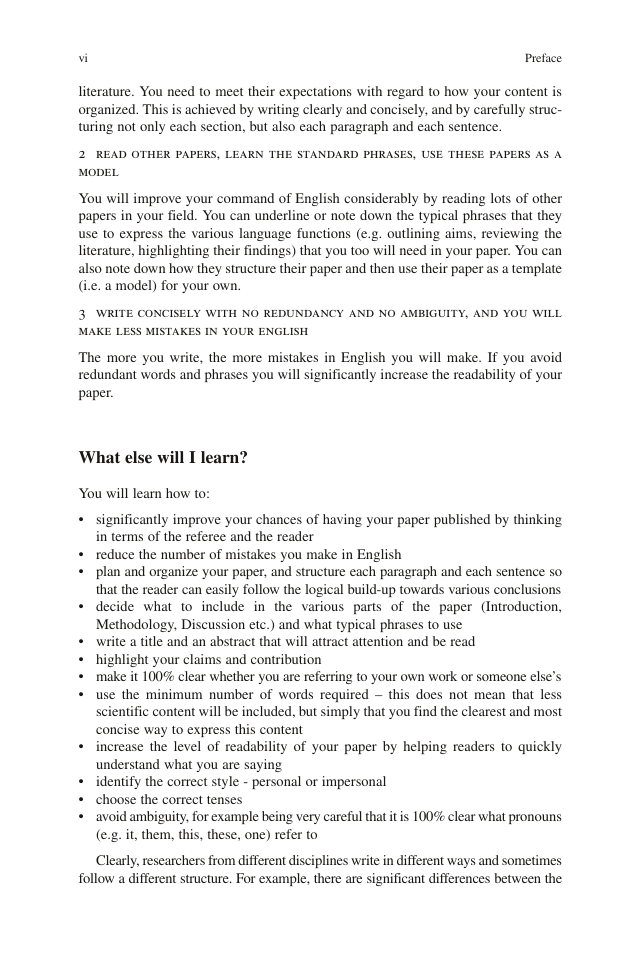
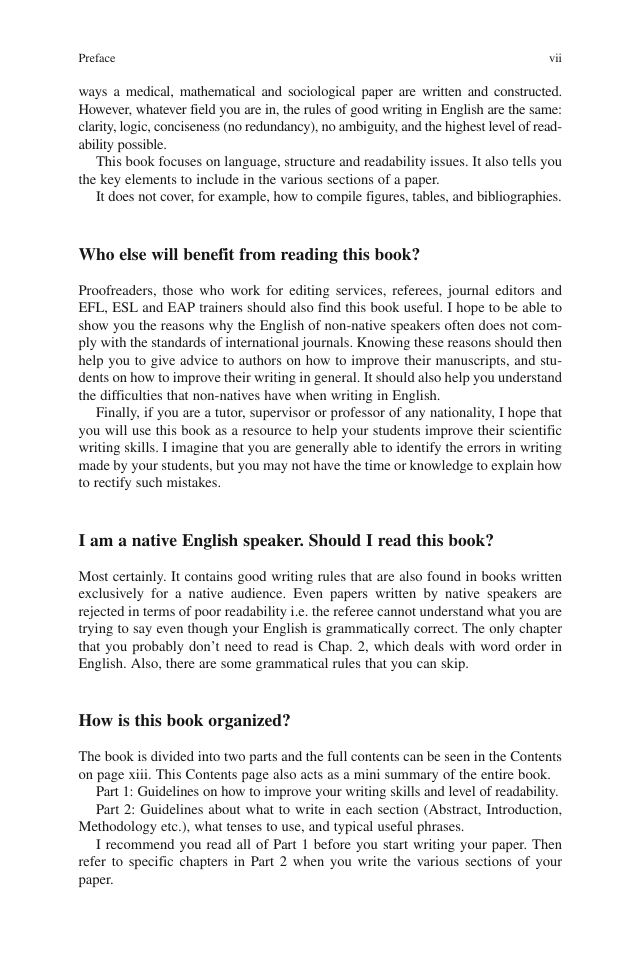








 2023年江西萍乡中考道德与法治真题及答案.doc
2023年江西萍乡中考道德与法治真题及答案.doc 2012年重庆南川中考生物真题及答案.doc
2012年重庆南川中考生物真题及答案.doc 2013年江西师范大学地理学综合及文艺理论基础考研真题.doc
2013年江西师范大学地理学综合及文艺理论基础考研真题.doc 2020年四川甘孜小升初语文真题及答案I卷.doc
2020年四川甘孜小升初语文真题及答案I卷.doc 2020年注册岩土工程师专业基础考试真题及答案.doc
2020年注册岩土工程师专业基础考试真题及答案.doc 2023-2024学年福建省厦门市九年级上学期数学月考试题及答案.doc
2023-2024学年福建省厦门市九年级上学期数学月考试题及答案.doc 2021-2022学年辽宁省沈阳市大东区九年级上学期语文期末试题及答案.doc
2021-2022学年辽宁省沈阳市大东区九年级上学期语文期末试题及答案.doc 2022-2023学年北京东城区初三第一学期物理期末试卷及答案.doc
2022-2023学年北京东城区初三第一学期物理期末试卷及答案.doc 2018上半年江西教师资格初中地理学科知识与教学能力真题及答案.doc
2018上半年江西教师资格初中地理学科知识与教学能力真题及答案.doc 2012年河北国家公务员申论考试真题及答案-省级.doc
2012年河北国家公务员申论考试真题及答案-省级.doc 2020-2021学年江苏省扬州市江都区邵樊片九年级上学期数学第一次质量检测试题及答案.doc
2020-2021学年江苏省扬州市江都区邵樊片九年级上学期数学第一次质量检测试题及答案.doc 2022下半年黑龙江教师资格证中学综合素质真题及答案.doc
2022下半年黑龙江教师资格证中学综合素质真题及答案.doc